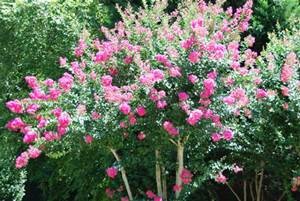
Crepe myrtle was first brought to the United States in 1790 and planted in the warm climate and sandy soil of South Carolina. A native to the Southeast Asia, the crepe myrtle took to the South like grits and country ham. It has since flourished and brought pleasure and beauty to millions of homeowners.
Crepe myrtle doesn’t really know if it’s a tree or a bush and no one knows for sure the spelling. Some say its crepe myrtle, others spell it as crape myrtle. It grows large and small and comes in most every color of the rainbow, except blue.
We planted our crepe myrtle bush (tree) about 20 years ago and it’s been a great addition to our yard, blooming year after year and for long stretches at a time. The appeal of a crepe myrtle is not only in spectacular colors, but in the longevity of its blooms.
Crepe myrtle (lagerstroemia) comes in numerous varieties, some as large as a tree. Flowers are borne in summer and autumn in panicles of crinkled flowers with a crepe-like texture, therefore the name “crepe myrtle”. Colors vary from deep purple to red to white and many shades in between. The hardy plant survives both cold weather (down to 20 below) and drought. It’s a perfect bush/tree for our southern climate.
Some care is needed during its initial year, but after the roots are established, the crepe myrtle does well with little or no attention. Some folks prune their crepes while others let them get as large as they want.
If your backyard (or front yard) needs a little color, plant a crepe myrtle this fall. You’ll enjoy your colorful neighbor for many years to come.

